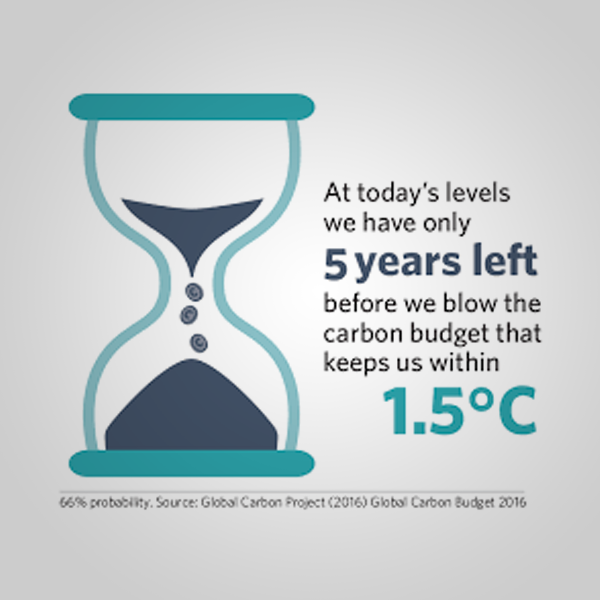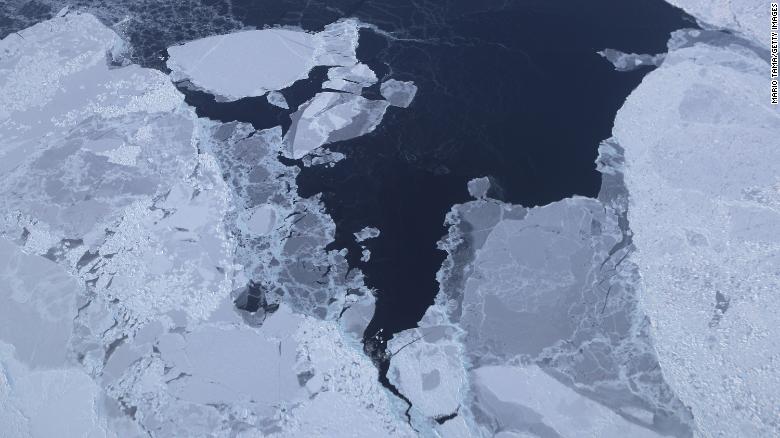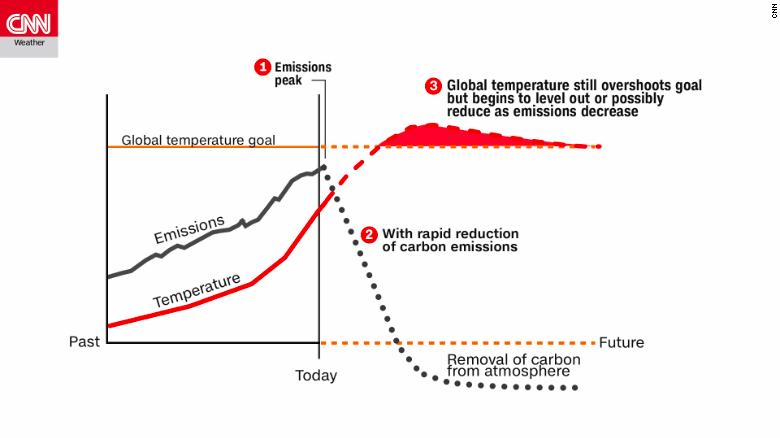
- MAIN
-
ABOUT
-
SOLUTION
- CONTACT US

Why Is It Important To Stop Climate Change?
The world is reaching its limits in terms of the levels of carbon emissions it can cope with before the climate becomes unsafe for human life.
The IPCC has provided data which shows the urgent need to keep global warming within a ‘safe’ limit of below 2°C - the maximum average temperature increase that governments believe we can ‘adapt’ to. Others argue, the maximum temperature change should be +1.5°C.
Currently, climate change is causing extreme global events; forest fires, migrating diseases, flooding, ocean acidification, and mass migration of people. A recent report has shown that climate change impacts have cost the U.S. economy at least $240 billion a year over the past ten years, and in the next decade that figure could increase to $360 billion.7 Climate change is a global phenomenon that affects everyone, no matter who or what is causing it.
Climate change report issues dire new warning
Governments around the world must take "rapid, far-reaching and unprecedented changes in all aspects of society" to avoid disastrous levels of global warming, says a stark new report from the global scientific authority on climate change.
The report issued Monday by the UN Intergovernmental Panel on Climate Change (IPCC), says the planet will reach the crucial threshold of 1.5 degrees Celsius (2.7 degrees Fahrenheit) above pre-industrial levels by as early as 2030, precipitating the risk of extreme drought, wildfires, floods and food shortages for hundreds of millions of people.
The date, which falls well within the lifetime of many people alive today, is based on current levels of greenhouse gas emissions.
The planet is already two-thirds of the way there, with global temperatures having warmed about 1 degree C. Avoiding going even higher will require significant action in the next few years.
"This is concerning because we know there are so many more problems if we exceed 1.5 degrees C global warming, including more heatwaves and hot summers, greater sea level rise, and, for many parts of the world, worse droughts and rainfall extremes," Andrew King, a lecturer in climate science at the University of Melbourne, said in a statement.
Global net emissions of carbon dioxide would need to fall by 45% from 2010 levels by 2030 and reach "net zero" around 2050 in order to keep the warming around 1.5 degrees C.
Lowering emissions to this degree, while technically possible, would require widespread changes in energy, industry, buildings, transportation and cities, the report says.
"The window on keeping global warming below 1.5 degrees C is closing rapidly and the current emissions pledges made by signatories to the Paris Agreement do not add up to us achieving that goal," added King.

Sea ice is seen from NASA's Operation IceBridge research aircraft off the northwest coast of Greenland. Scientists say the Arctic has been one of the regions hardest hit by climate change.
Consequences of past inaction
The report makes it clear that climate change is already happening -- and what comes next could be even worse, unless urgent international political action is taken.
"One of the key messages that comes out very strongly from this report is that we are already seeing the consequences of 1 degree C of global warming through more extreme weather, rising sea levels and diminishing Arctic sea ice, among other changes," said Panmao Zhai, co-chair of IPCC Working Group I.
Even if warming is kept at or just below 1.5 degrees C, the impacts will be widespread and significant.
Temperatures during summer heatwaves, such as those just experienced across Europe this summer, can be expected to increase by 3 degrees C says the report.
More frequent or intense droughts, such as the one that nearly ran the taps dry in Cape Town, South Africa, as well as more frequent extreme rainfall events such as hurricanes Harvey and Florence in the United States, are also pointed to as expectations as we reach the warming threshold.
Coral reefs will also be drastically affected, with between 70 and 90% expected to die off, including Australia's Great Barrier Reef.
Countries in the southern hemisphere will be among the worse off, the report said, "projected to experience the largest impacts on economic growth due to climate change should global warming increase."
The report underlines how even the smallest increase in the base target would worsen the impact of recent natural disasters.
"Every extra bit of warming matters, especially since warming of 1.5 degrees C or higher increases the risk associated with long-lasting or irreversible changes, such as the loss of some ecosystems," said Hans-Otto Pörtner, Co-Chair of IPCC Working Group II.
The report cites specific examples of how impacts of global warming would be lessened with the 1.5 degrees C increase, compared to the 2 degrees C increase:
Global sea levels would rise 10 cm lower by 2100.
The likelihood of an Arctic Ocean free of sea ice in summer would be once per century, instead of at least once per decade.
Coral reefs would decline by 70% to 90% instead of being almost completely wiped out.
Special Report: What it's like at the ground zero of climate change

This chart from the IPCC shows how global temperatures would respond to a sudden and drastic reduction of greenhouse gas emissions. Even with immediate action, global temps will still overshoot the goal, but could reduce back to the target over time.


What Is Being Done To Stop Climate Change?
With 197 Parties, the United Nations Framework Convention on Climate Change (UNFCCC) has near universal membership and is the parent treaty of the 1997 Kyoto Protocol. The 2015 Paris Agreement under the UNFCCC is the most significant international treaty on climate change. It saw 195 countries unite in a commitment to limit the rise in global temperatures.
The Paris Agreement pledges to keep the rise in global average temperature below 2°C; aiming for 1.5°C. Scientists agree that this is the maximum ‘safe’ limit, above which the impacts of climate change are likely to be irreversible and beyond what we can adapt to.
Yet, even if each country adheres to its reduction targets, there is a difference of up to 19 gigatons of carbon dioxide equivalent (GtCO2e) between what should be emitted to keep under the 1.5°C increase target and what is pledged to be emitted in 2030. According to the latest available data, this is equivalent to the greenhouse gasses emitted by China, all 28 EU member states, and the United States combined.8 This huge gap will need to be filled by companies and individuals around the world, acting to reduce and rebalance their own carbon footprints.
What Still Needs To Be Done To Solve Climate Change?
With the historic Paris Agreement in place we are entering a world with a finite ‘budget’ of carbon that can be emitted. This will lead to a need for carbon neutral and even carbon negative emissions technologies and processes to replace emitting activities of today, along with a transfer of finance associated with those activities.
Demand for change is growing. It is coming from policymakers with the power to regulate, investors who appreciate the financial risks of climate stress, and from employees and consumers who want to work for and buy from companies that have a positive impact on the world.
All businesses need to have a strategy in place to reduce emissions and other negative environmental impacts whilst taking advantage of opportunities from clean technology and new business models. Alongside this, we need collective action to immediately reduce emissions in cost-effective ways.
For consumers, every financial transaction has a climate consequence and it is important that they are able to understand the environmental impact of the products they are buying and take action.


